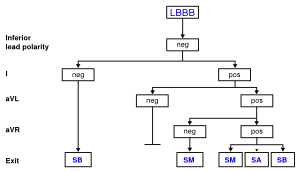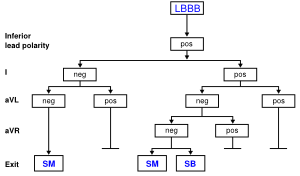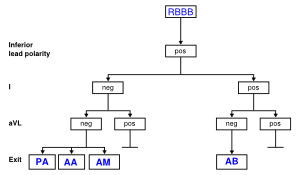Localisation of the origin of a ventricular tachycardia

The localisation of the origin (or exit site) of a ventricular tachycardia can be helpful in understanding the cause of the VT and is very helpful when planning an ablation procedure to treat a ventricular tachycardia.
Using this approach and the algorithms below segal the exit site can be estimated with reasonable accuracy (PPV around 70%). In these algorhythms, bundle branch block was defined as “left” or “right” based on QRS morphology in lead V1; right bundle branch block (RBBB) pattern was defined by a mono-, bi-, or triphasic R wave or qR in V1; LBBB pattern was defined by a QS, rS, or qrS in V1.




References
<biblio>
- segal pmid=17338765
- Miller pmid=3349580
</biblio>